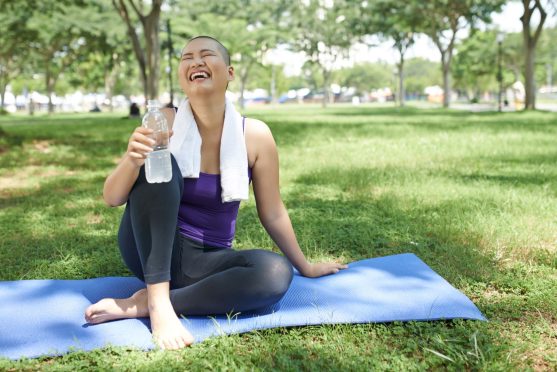Cancer treatment can be physically and mentally exhausting, but exercise can help.
Gretchin Bade, PT, oncology program lead in the Hartford HealthCare Rehabilitation Network, says daily aerobic exercise or strength training can increase your strength, reduce fatigue, ease treatment side effects and lift your spirits.
“Stretching can also help restore flexibility in joints and muscles that may have lost range of motion and mobility due to surgery or radiation,” Bade says.
In addition, activity may improve your:
“Regular exercise also decreases your risk of the cancer coming back,” Bade says.
> Connect with the Cancer Institute’s Survivorship Program
Keep it simple
At first, she suggests talking to your healthcare provider to see if there are any limitations due to medications or other treatment. Then, start moving as soon as you can, finding opportunities to move like walking to the mailbox, dancing to your favorite music or walking your dog.
Aerobic activity – brisk walking, light cycling, yoga, tai chi or water exercise – improves the way your body stores and uses energy, your stamina and heart health, Bade says.
“Patients should work toward aerobic activity five days per week. During treatment, several short sessions may work better than one long one,” she notes.
Strong survivor
Equally important is strength training, which builds muscle. More muscle, research shows, may improve cancer survival odds, Bade adds.
She suggests easy strength training moves like:
- Hand weights
- Resistance bands
- Kitchen counter push-ups, chair squats that use your own body weight
“Aim for two to three days a week, with a rest day in between each session. Start with light effort and build to medium or hard if you can,” she says.
Stretching skills
People with cancer can also simple stretching and balance training, which help maintain flexibility and prevent injuries. Stretch your muscles to the point where you feel a comfortable strain but not pain.
To improve your balance, try standing on one foot, walking on a line or using a balance board, Bade suggests. Use a chair or wall for support if needed.
Physical and occupational therapists can help with activity, balance and stretching. Talk to your provider about a referral.


